
25 minute read
Excel
Creating solutions requires inclusive research programs that build off of one another, instead of remaining siloed. At the Andlinger Center for Energy and the Environment at Princeton University, we take pride in bringing together scholars who can collectively help to develop new fields and dynamic solutions for energy and environmental issues. Through seed grants and fellowships for veteran energy experts and postdoctoral researchers, we aim to build a community of scholars who integrate various fields of study in ways that are useful for addressing modern energy and environmental problems and their underlying contexts. Our researchers work on electric infrastructure, fuels and chemicals, decisionmaking and economics, environmental science, sensing and remediation, and the built environment, to lay the foundations for the next generation of clean energy technologies while working on remediating today’s key issues.
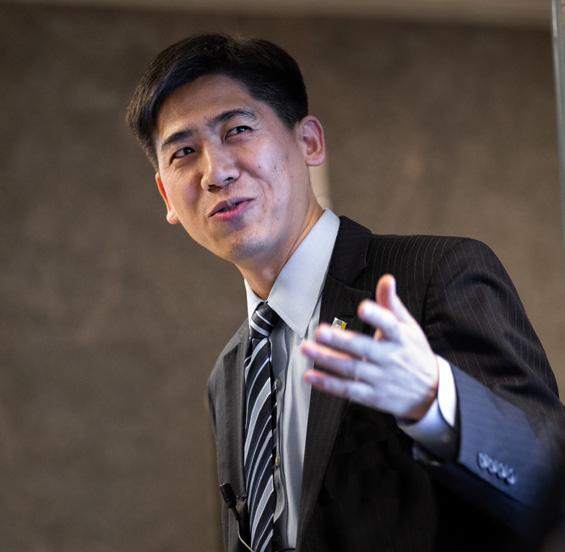
Z. Jason Ren, acting director and associate director for research at the Andlinger Center for Energy and the Environment, professor of civil and environmental engineering and the Andlinger Center for Energy and the Environment (Photo by Tori Repp / Fotobuddy)
46
Research Projects Supported by the Andlinger Center—
$6.9 Million Invested
$1.9 million
Total – 91 2013 – 7 2014 – 20 (+12)
Publications Resulting from Andlinger Center Seed Fund Support
+$1.5 million +$600,000 +$500,000 +$800,000 +$600,000
Graduate Students & Postdocs Supported
+$600,000 +$372,000 67
External Grants Totaling
$32 Million
$6.7 million +$1.8 million +$4.5 million +$2.7 million +$3.4 million +$5 million
2013 2014 2015 2016 2017 2018 2019 2020
114
Publications *the 2020 may change as I am waiting to hear back from 2 professors. 2015 – 28 (+8) 2016 – 42 (+14) 2017 – 53 (+11) 2018 – 76 (+24) 2019 – 91 (+15) 2020 – 93 (+2)Lorem ipsum 380
+23
+$8 million
+24 +15
+12 +8 +14 +11 +82
19 +18 +19 +13 +82
+67
2014 2015 2016 2017 2018 2019 2020
+80
Key to Andlinger Center Research Areas
Built environment, transportation, and infrastructure
Electricity production, transmission, and storage
Fuels and chemicals
Environmental sensing and remediation
Decision and behavioral science, policy, and economics
Environmental and climate science
2014 2015 2016 2017 2018 2019 2020 2013 2014 2015 2016 2017 2018 2019 2020
New Process-Systems Engineering Professor
Christos Maravelias joined the faculty of the Andlinger Center as the Anderson Family Professor in Energy and the Environment and professor of chemical and biological engineering, effective July 1, 2020. Maravelias was the Vilas Distinguished Achievement Professor and Paul A. Elfers Professor at the University of Wisconsin-Madison. A specialist in process-systems engineering, Maravelias is also a researcher with the Great Lakes Bioenergy Research Center. Maravelias joins the Princeton faculty as an expert in the theoretical underpinnings of chemical and biological engineering, especially as they relate to renewable energy systems. His work covers a wide range of application areas, including the design of biorefineries and solar fuel systems, the optimization of biofuel supply chains, and the planning and scheduling of chemical production. He is jointly appointed in the Department of Chemical and Biological Engineering and the Andlinger Center for Energy and the Environment. Maravelias deepens the center’s knowledge base on energy systems and energy transitions, a strategic area of growth for the center.
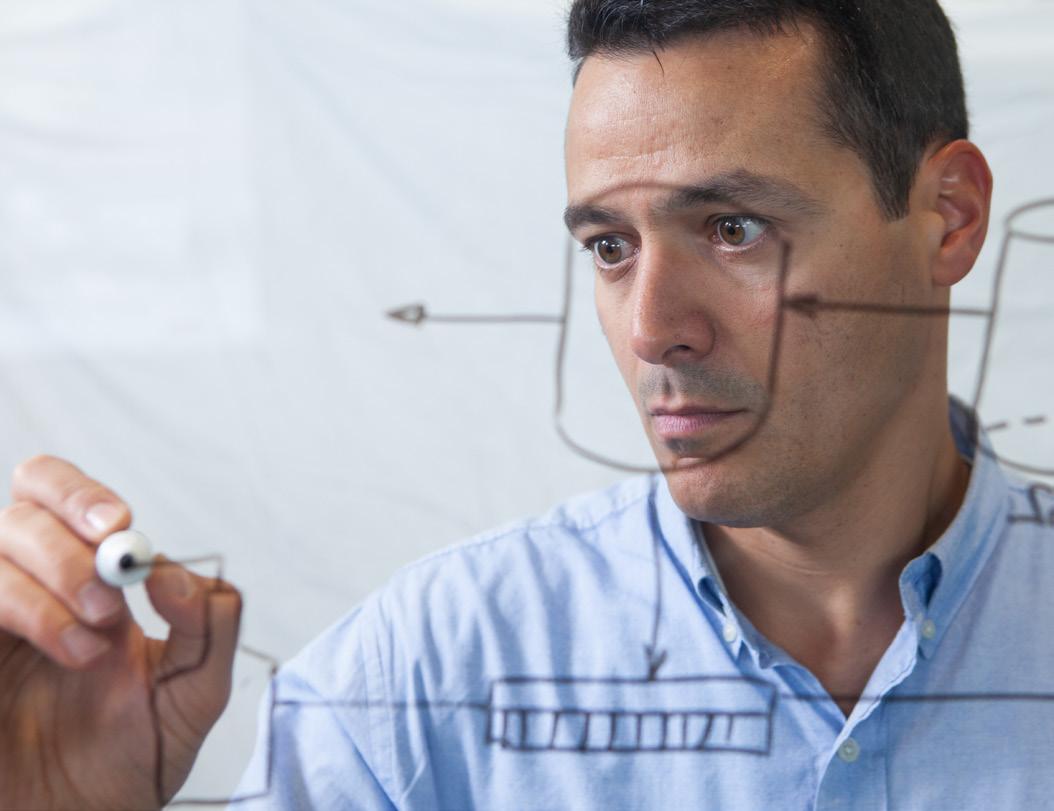
Christos Maravelias (Photo by Matt Wisniewski/Wisconsin Energy Institute)
Strengthening Energy-Systems Expertise
—Christos Maravelias
RIGHT
Chris Greig (Photo by Bumper DeJesus)
Chris Greig, Australian energy leader and former industry executive, has been appointed the Theodora D. ’78 and William H. Walton III ’74 Senior Research Scientist, effective August 1, 2020. Greig was the director of the Dow Centre for Sustainable Engineering at the University of Queensland (UQ) in Australia and also the founding director of the UQ Energy Initiative. He has experience bridging the gap between industry and academia, with a history in the energy and resources industry and senior executive experience leading the development of a coal gasification plant with carbon capture and storage in Australia before becoming a professor. The main thrust of his work at Princeton will be to advance the Rapid Switch initiative. Rapid Switch is a global research network focused on identifying and overcoming the most critical bottlenecks to decarbonization, which Greig initiated in Australia and is now helping to lead at the Andlinger Center. When asked about how he will measure the success of this next chapter, he said getting everyone—decision-makers, industry, and policymakers—on the same page moving collaboratively toward realistic decarbonization goals would be the ultimate marker of this success.
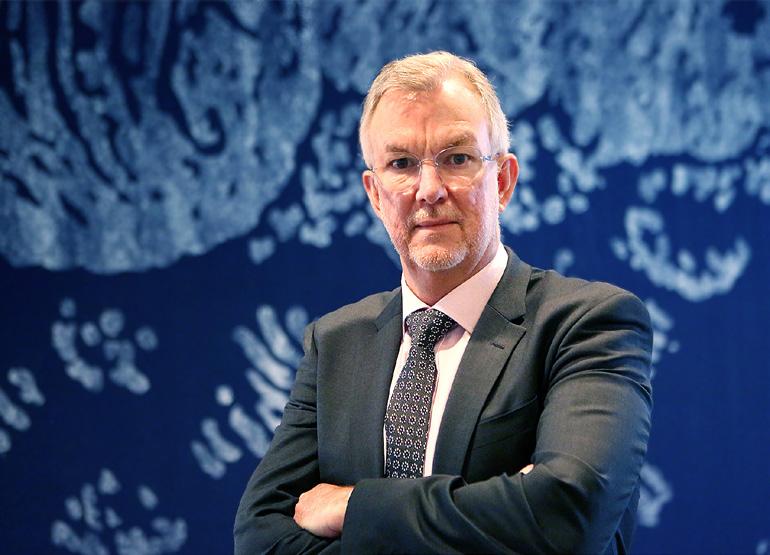
—Elke Weber
RIGHT
Elke Weber opens the floor for questions during a seminar on Rapid Switch hosted by the Climate Futures Initiative in November. (Photo by Bumper DeJesus)
Leadership
Z. Jason Ren, the associate director for research, served as acting center director during the year of 2020 while Yueh-Lin (Lynn) Loo was on sabbatical. The Andlinger Center welcomed Claire Gmachl, Jennifer Rexford, and Claire White to the executive committee as of July 1, 2019. Steven Cowley and Anu Ramaswami joined the committee on July 1, 2020. The full executive committee member list can be found on page 39. Andrea Goldsmith, an expert and entrepreneur in wireless systems who served in campus-wide leadership roles at Stanford University, has been appointed dean of the School of Engineering and Applied Science effective September 1, 2020. She joins as the Arthur LeGrand Doty Professor of Electrical Engineering.
Elke Weber Inducted into the National Academy of Sciences
Elke Weber, the Gerhard R. Andlinger Professor in Energy and the Environment and professor of psychology and public affairs, was elected a member of the National Academy of Sciences in recognition of her distinguished and continuing achievements in original research, a lifetime appointment that is widely recognized as one of the highest honors a scientist can
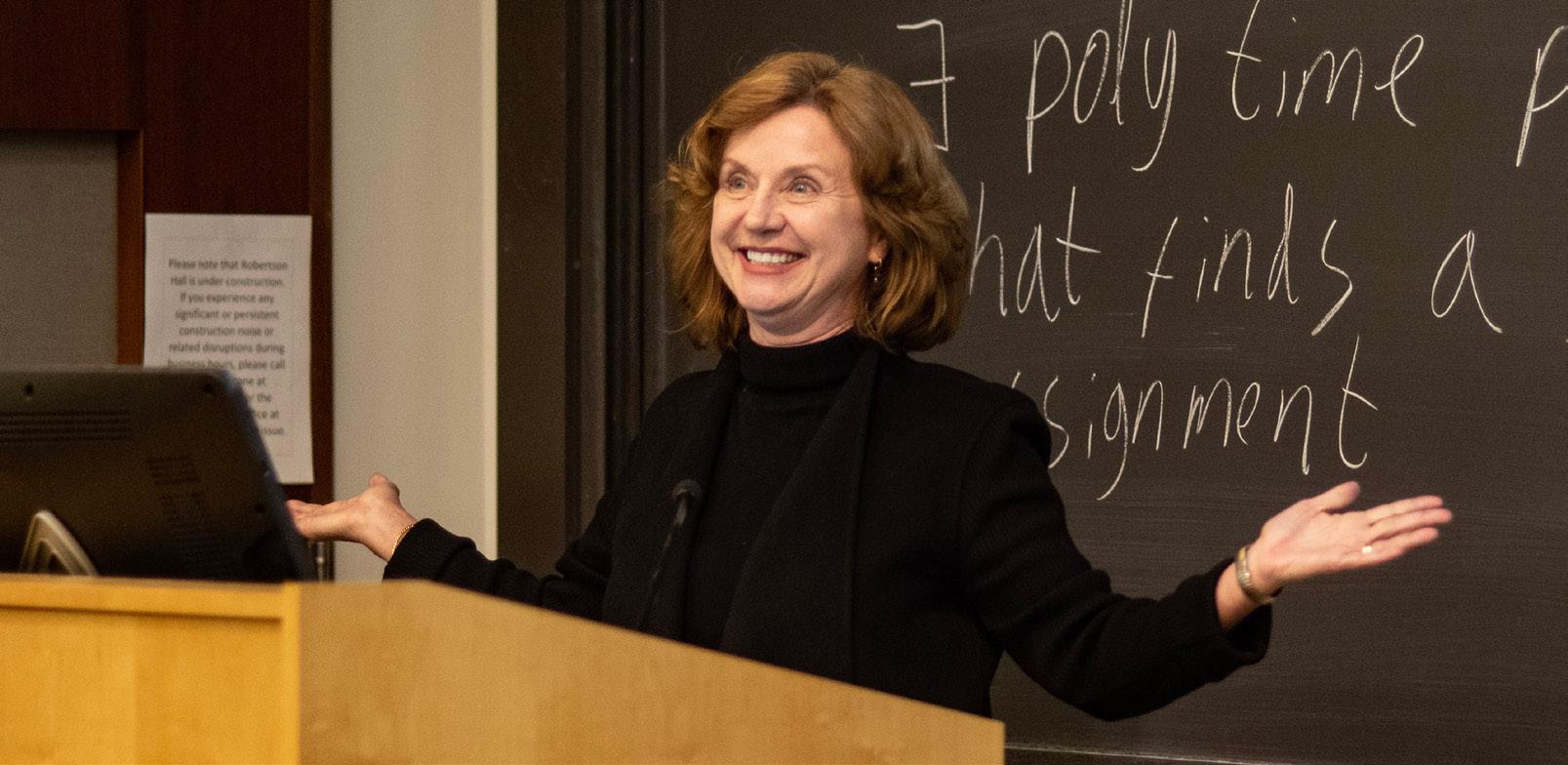
receive. Weber was one of four Princeton University faculty members elected this year.
Weber, who is also the associate director for education at the Andlinger Center, is known internationally for using behavioral decision science and psychological theory to advance global understanding of social problems and developing strategies to alleviate them. She has been recognized for her distinctive approach linking psychology principles to behavior change and uncovering the implications for environmental and economic policy, communications, management, economics, and leadership models. Weber’s research ranges from studies of discrimination and economic inequality to investigations of the social and psychological barriers to decarbonization. Much of her work contextualizes trade-offs and decision-making risks, especially under conditions of uncertainty. Her recent research shows how the personal carbon footprints of climate scientists, philanthropists, and other climate advocates affect the perceived legitimacy of and policy support for their climate strategies. Prior to joining Princeton University in 2016, Weber was the Jerome A. Chazen Professor of International Business at Columbia Business School for 17 years, and also held visiting appointments at London Business School and the Copenhagen Business School. Congratulations Elke!
And the Honor Goes to…
Sujit Datta, assistant professor of chemical and biological engineering, received a CAREER Award from the National Science Foundation as part of its Faculty Early Career Development Program, which supports junior faculty who exemplify leadership in education and research. Datta will use the funds to investigate how bacteria move in porous environments like biological tissues, soils and sediments, and gels. The work promises to make a wide-ranging impact on areas such as the study of diseases and groundwater remediation.
Z. Jason Ren received the 2020
Walter L. Huber Civil Engineering
Research Prize, the highest-level mid-career research award from the American Society of Civil Engineers. Ren was recognized for producing groundbreaking technological advancements that are transforming water infrastructure for energy and resource recovery. The award is given annually to individuals who have made research contributions in all disciplines of civil engineering. Ren is well known for his work in understanding microbial and electrochemical processes that have enabled critical advancements in wastewater treatment, resource recovery, and sustainable water infrastructure.
Yueh-Lin (Lynn) Loo, director of the Andlinger Center for Energy and the Environment and the Theodora D. ’78 and William H. Walton III ’74 Professor in Engineering, has been elected a fellow of the Materials Research Society, a lifetime appointment recognizing outstanding leadership, service, and research contributions to the field of materials science. Loo has made important advances in the field of organic and polymer electronics, including organic photovoltaics, which among other benefits, could substantially lower the environmental costs of generating electricity. Loo is also a professor of chemical and biological engineering.
Jesse Jenkins, assistant professor of mechanical and aerospace engineering and the Andlinger Center for Energy and the Environment, is one of 16 national experts selected from across disciplines to serve on a committee of the National
Academies of Sciences, Engineering, and Medicine
to investigate ways to accelerate decarbonization of the U.S. economy. Jenkins was chosen for his expertise on energy-systems modeling and decarbonizing the electricity sector. The committee will assess the technological, policy, social, and behavioral dimensions of removing carbon from the atmosphere and of preventing future carbon dioxide emissions. The goal is to produce analysis that will identify the status of technologies, policies, and societal factors that could contribute to reducing greenhouse gases, and identify areas where there are research and policy gaps.
Michael Mueller, associate professor of mechanical and aerospace engineering, was awarded the 2020 Research Excellence Award of The Combustion Institute for publishing research that yielded a major impact on the field of combustion science. His research uses high-fidelity computational modeling to study turbulent reacting flows. Recent areas of investigation include multimodal turbulent combustion, pollutant emissions, and combustionaffected turbulence.
The list of awards and awardees represent select highlights from the past year and do not reflect all of the achievements of our faculty and associated faculty.
TOP
Shan Huang tracks the removal of PFAS, a historically tough pollutant to remediate, in lab vials over 100 days of observation. Huang and Peter Jaffé are testing the use of the Acidimicrobiaceae bacterium A6 as a way to clean waterways of the class of pollutants.
ABOVE
Peter Jaffé (Photos by David Kelly Crow)

Microbe Chews Through PFAS and Other Tough Contaminants
PFAS, or per- and polyfluoroalkyl substances, is a class of pollutants that have been widely used in products ranging from nonstick pans to firefighting foam. Despite efforts by manufacturers to phase out types of PFAS because of the dangers they pose to human health, the substances are longlived and extremely difficult to remove from soil and groundwater because of the strength of the carbonfluorine bond. Peter Jaffé, the William L. Knapp ‘47 Professor of Civil Engineering and professor of civil and environmental engineering, and Dr. Shan Huang, a professional specialist in the Department of Civil and Environmental Engineering, suspected that the bacterium Acidimicrobium A6 might be an effective remedy. The researchers first began working with the bacterium several years ago when they investigated a phenomenon in which ammonium broke down in acidic, iron-rich soils in New Jersey wetlands. The new research, published in the journal Environmental Science and Technology, showed that the relatively common soil bacterium demonstrated its ability to break down PFAS, removing 60% of the contaminant after 100 days and releasing an equivalent amount of fluoride in the process. One challenge in working with Acidimicrobium A6 is the bacterium’s demand for iron both to grow and eliminate compounds. Jaffé, along with graduate student Weitao Shuai, a 2019 Maeder Fellow in Energy and the Environment, and Melany Ruiz, now a postdoctoral researcher at Rutgers University, determined that they could substitute an electrical anode for the iron in lab reactors. This allowed the researchers to more easily grow these bacteria and work with them; it also presented a possible way to develop reactors for remediation in the absence of iron. The bacterium thrives in low-oxygen conditions, which makes it particularly effective for soil and groundwater remediation and allows it to function without expensive aeration. Jaffé said even though the bacteria’s requirement of iron-rich and acidic soil conditions could limit their deployment, adjusting soil conditions could also allow the bacteria to function in areas that do not naturally meet these requirements.
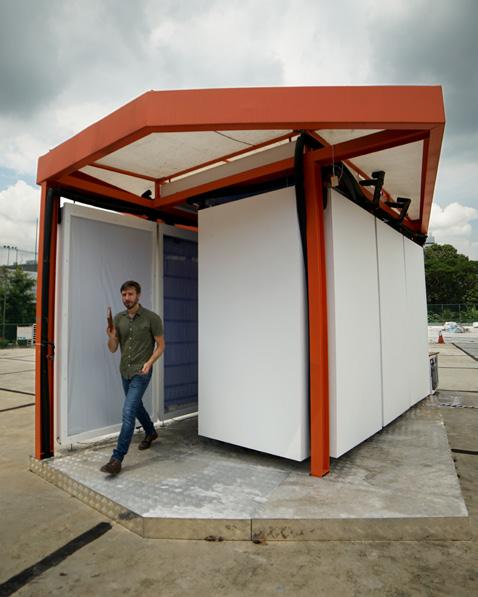
ABOVE
Forrest Meggers and a team of researchers, including lead researcher Eric Teitelbaum, a graduate student in architecture, built a pavilion in Singapore to show that radiant cooling could keep people comfortable in extremely hot and humid conditions. (Photo provided by the researchers)
Fix to Longstanding Flaw in Sensor Readings Could Lead to Energy-Saving Building Designs
Forrest Meggers has been working on radiant heat exchange, which uses surfaces instead of air to cool people, for more than a decade. In his research, Meggers, assistant professor of architecture and the Andlinger Center for Energy and the Environment, has been showcasing that buildings could feel comfortable using significantly less energy by making the surfaces of nearby objects cool like walls, windows, and floors, instead of cooling the air around people. When his team of Princeton researchers traveled to Singapore in January 2019 to demonstrate the effects of radiant cooling in tropical environments, they expected that their exhibit’s unique design would cool inhabitants without the need for any air conditioning. But, it didn’t work as expected. A glitch spurred Meggers to comb through the building’s design looking for errors. He didn’t find any. Instead, Meggers’s team uncovered a significant error in the method long used to measure radiant cooling in buildings. The findings, published in the journal Scientific Reports, show that the sensing tool and associated formulas used to calculate radiative cooling and thermal comfort did not account for a type of airflow called “free convection.” Meggers and his team designed a new tool that does not require such formulas for deriving the thermal comfort measurements. The findings also show that engineers and designers had relied for decades on inaccurate measurements that consistently underestimated the role of radiant heat exchange in thermal comfort. Letting the air warm up by five degrees while cooling surfaces, the researchers say, can lower energy demand by up to 40% and maintain occupant comfort.
Making the Rapid Switch
Rapid Switch, a global research initiative on decarbonization catalyzed by the Andlinger Center, kicked off in 2018 and several projects are active. One project investigates how the PJM electric grid in the United States could economically decarbonize. Another explores how to effectively assess CO2 storage capacity reserves and identify storage potential in relatively underexplored regions like China and India.
A third, the Net-Zero America Project (NZAP), is quantifying with local geographic specificity the amount and pace of energy technology and infrastructure deployments needed across the United States to achieve net-zero greenhouse gas emissions by 2050. Preliminary findings from NZAP show that historically-unprecedented deployment rates, involving large and rapid capital investments, will be needed for any of the net-zero scenarios. For example, by 2050, electricity generation would need to double to quadruple from today’s baseline, with solar and wind dominating new generation. Land use implications are significant. Energy use efficiency must increase dramatically; 85% to 100% of all personal vehicles must be electrified to achieve net-zero emissions in the United States by 2050. Fuel uses that are difficult to electrify, such as aviation, will rely increasingly on advanced biofuels or fuels synthesized from hydrogen and carbon dioxide, with the latter captured at industrial facilities, bioenergy facilities, power plants, or directly from the air. Storage of captured carbon dioxide plays a large and essential role in most scenarios to get to net-zero emissions in the United States. This transition would yield a net increase in jobs across the country throughout the 2020s, compared to business-as-usual scenarios.

For more on Rapid Switch projects, visit www.acee.princeton.edu/rapidswitch.
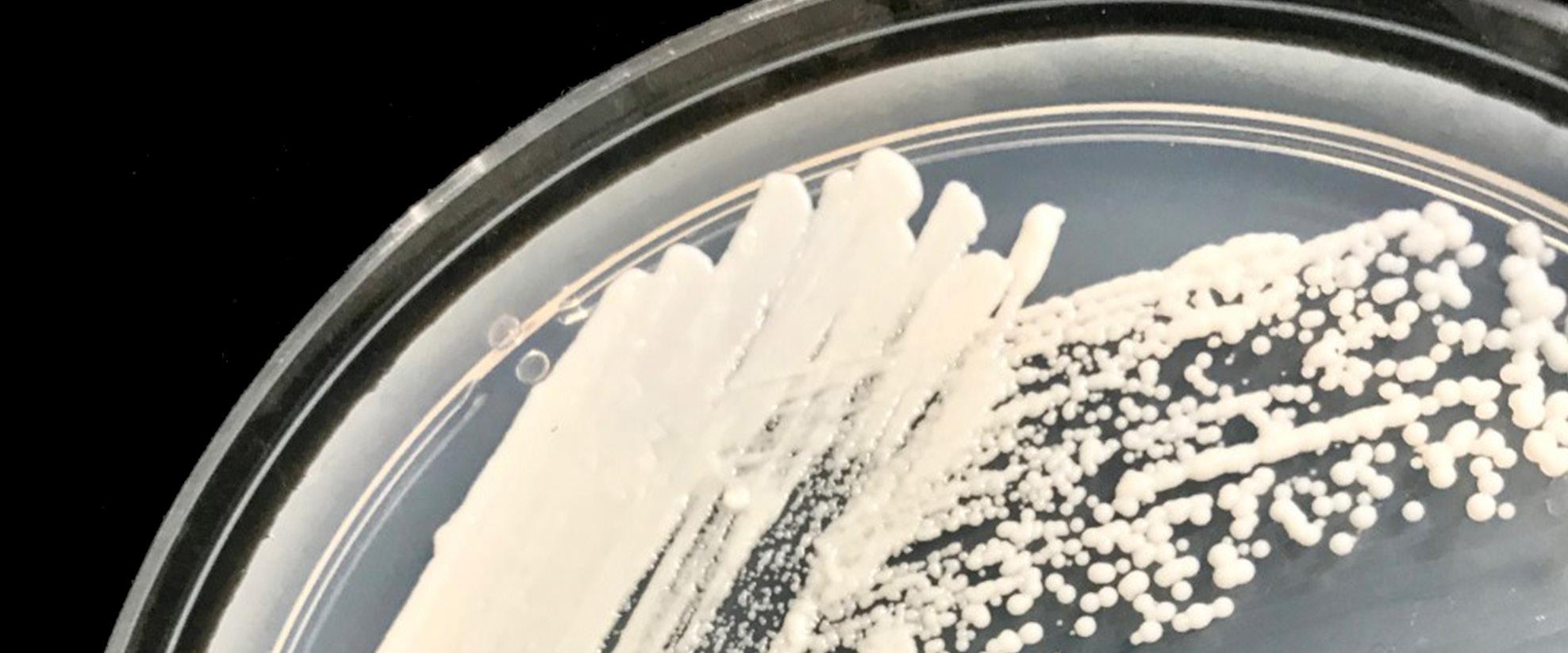
José Avalos and his team modify the genes of Saccharomyces cerevisiae, a strain of yeast commonly used to create ethanol, to produce isobutanol, a more efficient and useful fuel. (Photo by Frank Wojciechowski)
—José Avalos
RIGHT
Claire Gmachl and Barry Rand have helped stabilize a new type of perovskite LED, opening the door for the material to be used in nextgeneration lighting, displays, and lasers. (Photo by Denise Applewhite, Office of Communications)
How to Make Better Biofuels: Convince Yeast It Is Not Starving
Yeast helps make bread, beer, and the biofuel ethanol, but scientists believe it can also be used to create isobutanol, an even more efficient fuel. Normally, yeast only produces a tiny amount of isobutanol. Now, José Avalos, assistant professor of chemical and biological engineering and the Andlinger Center for Energy and the Environment, and a team of researchers have discovered a genetic switch in the yeast that significantly ramps up production. The findings, published in the journal Cell Systems, show that the researchers were able to increase isobutanol production by roughly five times over that of standard yeast strains by making it more tolerant to isobutanol’s toxic effects. Isobutanol is about 25% more energy-dense than ethanol, has better compatibility with gasoline engines, and can be upgraded to jet fuel.
New LED Material Offers Efficiency and Color Quality for Displays and Lighting
A new class of materials called halide perovskites offer higher color quality and low-cost and low-energy manufacturing, but have been considered too unstable for practical use. Now Barry Rand, associate professor of electrical engineering and the Andlinger Center for Energy and the Environment, and Claire Gmachl, the Eugene Higgins Professor of Electrical Engineering and associate chair of the Department of Electrical Engineering, have found a way to significantly improve the material’s stability and performance by preventing the buildup of heat in the device, opening the door for the material to be used in next-generation displays and lighting. Lianfeng Zhao, first author on the research and a postdoctoral research associate in the Department of Electrical Engineering, said making more conductive charge transport layers, building a much narrower device, attaching an efficient heat sink, and pulsing the device to quickly turn it on and off, were key strategies that helped increase the device’s operational lifetime tenfold at high currents.
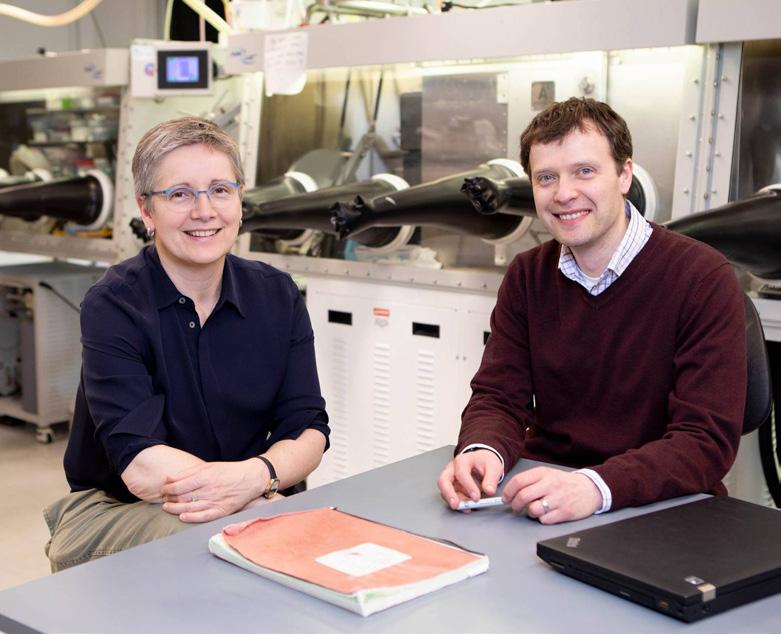
Evaluating Infrastructure and Cities Postpandemic
Will behavior change brought about by the COVID-19 pandemic be long-lasting? How has urban infrastructure planning been affected by the pandemic? Anu Ramaswami and Elke Weber seek to answer these questions, and understand if new preferences around public transit, green spaces, food, health care, and other areas have emerged during this period. Ramaswami is the Sanjay Swani Professor of India Studies, professor of civil and environmental engineering and director of the M.S. Chadha Center of Global India at the Princeton Institute for International and Regional Studies.
Optimizing Offshore Wind Farm Design
Designing wind farms for maximum power output needs to account for the “wake effect” that upstream turbines have on those downstream. Predicting these wakes for offshore wind farms is difficult due to complex energy exchanges between the atmosphere, sea surface, and the turbines themselves. Michael Mueller, associate professor of mechanical and aerospace engineering, is leading a project to develop novel computational fluid dynamics modeling to mimic the behavior of the sea surface to inform wind farm design. Luc Deike, assistant professor of mechanical and aerospace engineering and the Princeton Environmental Institute, is a collaborator along with other engineering colleagues.
Funding for the Andlinger Center grant for Innovative Research in Energy and the Environment was provided by: Addy/ISN North American Low Carbon Emission Energy Self-Sufficiency Fund; John E. Cross ’72 and Mary Tiffany Cross; High Meadows Foundation’s Andlinger Center for Energy and the Environment Director’s Fund; and anonymous gifts.
One Year Later
Machine Learning to Better Manage Large Water Systems
Since receiving the grant, the researchers:
Q
Q
Q developed a high-resolution rainfall data set for the Baltimore-Washington metropolitan region for 2000–2019 based on radar measurements.
performed case-study analyses of “cloudburst” storms that have stimulated broad interest from the regional and national water-management community. developed analysis tools for assessing the changing frequency of extreme rainfall based on a 20-year rainfall data set, and developed resampling procedures for estimating precipitation frequency from the largest rainfall events during the period.
One Year Later
Using Atmospheric CO2 to Create Fuels
Since receiving the grant, the researchers:
Q
Q
Q began forming a startup, ReCaST (Reduced Carbon Sequestration Technology), with support from Solidia Inc., a company that produces cement-based products that use CO2 inputs during curation.
applied for a grant from the U.S. Department of Energy to form a solar liquid fuels national project, which would involve 24 investigators across the country.
hired three postdoctoral fellows and initiated work in the areas of: genetic design of bacteria that can produce butanol; CO2 electrocatalyst development on carbons with high surface areas; and surface science of CO2 capture and utilization
Two Years Later
Decarbonizing the World’s Energy Systems
Since receiving the grant, the researchers:
Q
Q

Q established a global Rapid Switch research network that is pursuing 15 projects distributed across several world regions aimed at understanding ways to accelerate the decarbonization of regional energy systems. modeled alternative pathways for the U.S. to achieve net-zero emissions from its energy and industrial system by 2050. The research includes detailed geospatial mapping of required deployments of biofuels, solar and wind farms, high-voltage transmission lines, nuclear plants, CO2 pipelines, and other energy infrastructure. secured $3.9 million dollars in additional research funding, enabling support for 10 postdoctoral researchers under Rapid Switch, including two directly supported by the seed funding.
Three Years Later
Electrifying Transportation
Since receiving the grant, the researchers:
Q
Q
Q published three papers on the flame aerosol synthesis process in the journals ACS Applied Energy Materials, Applied Energy, and the Proceedings of the Combustion Institute.
used the findings to accelerate advances toward product commercialization for a startup, HitNano. filed an international patent on the unique, aerosol-based, high-temperature materials-synthesis process for applications in energy storage.

ABOVE
Light is focused into beams using apertures, irises, and other optic lab installations. The lasers are part of an emerging research field that uses light to break down biomass to derive the chemical backbones for common products, which historically have relied on fossil fuels. (Photo courtesy of BioLEC)
OPPOSITE LEFT
Yiguang Ju explains his battery technology innovation, a way to produce low-cost and highefficiency cathode materials using combustion, to a video crew during the Celebrate Princeton Innovation event in November. (Photo by Bumper DeJesus)
OPPOSITE RIGHT
Yueh-Lin (Lynn) Loo holds a prototype of her self-powered smart window, which enables users to control the amount of light and heat coming through it. The innovation boasts an onboard translucent solar cell that produces the electricity necessary to power the device and therefore can be used to retrofit existing buildings. (Photo by Sameer A. Khan/Fotobuddy)
Light-Powered Catalysts Could Make Molecules from Biomass
Making everyday chemicals, which often involves reforming fossil fuels, accounts for 10% of the world’s energy demand and generates 7% of the world’s greenhouse gases annually. But what if the chemicals could be produced by reforming plant or feedstock materials, and their manufacture supercharged with light? Bio-Inspired Light-Escalated Chemistry (BioLEC), an Energy Frontier Research Center based at Princeton University, aims to do just that. Led by Gregory Scholes, the William S. Tod Professor of Chemistry, the research seeks to open the door to manufacturing valuable chemical products from common and abundant materials. Launched in 2018, the center has most recently shown how to depolymerize lignin, a major component of wood and waste materials, such as sawdust, using a light-powered reaction to produce small base molecules. The Andlinger Center advises on the strategic management of BioLEC and provides support for distinguished postdoctoral researchers who work across all BioLEC research groups.
Distinguished Postdoctoral Fellows
Sunxiang (Sean) Zheng
has been selected as the newest Distinguished Postdoctoral Fellow. During his graduate studies at UC Berkeley he developed nanomaterial-enabled membranes for aqueous separation. He will collaborate with Claire White, associate professor of civil and environmental engineering and the Andlinger Center for Energy and the Environment, and Z. Jason Ren to develop new membranes and materials to capture and convert CO2 into value-added carbonate minerals. The research team hopes to create a system that more easily captures and utilizes CO2 from industrial facilities for subsequent valorization. Distinguished Postdoctoral Fellow Luis Ceferino has accepted a position as assistant professor at New York University in the Department of Civil and Urban Engineering and the Center for Urban Science and Progress. He will continue his research on hurricanes and earthquakes, and impacts on power systems and emergency response efforts.
Successfully completing their tenure as Andlinger Center Distinguished Postdoctoral Fellows, Bastien Wild, Kian Wee Chen, and Tapomoy Bhattacharjee continue their work at Princeton in each of their primary advisor’s faculty labs as postdoctoral research associates. They presented at a seminar series during the summer of 2020, sharing their research progress on silicate dissolution and sustainable cements, new architectural design tools, and biofilms for water treatment, respectively.
Impact of the Fuel Economy Standards
Impact of the Fuel Economy Standards Princeton researchers undertook the first comprehensive historical analysis on the impacts of the corporate average fuel economy standards, known as the CAFE standards. The paper, published in the journal Energy Policy, stated that the CAFE standards were an example of good policy and a costefficient way to achieve a sound public objective. The standards saved $4 trillion in fuel costs, 14 billion metric tons of carbon emissions, and almost two trillion gallons of gasoline over the policy’s 40-year history. Distinguished Postdoctoral Fellow Rebecca Ciez collaborated with Judi Greenwald, a non-resident fellow at the Andlinger Center, and transportation expert David Greene, a research professor in the Department of Civil and Environmental Engineering at the University of Tennessee, Knoxville, on the study.
Designed in the Dorm Room
Flux Marine
The company set out to design and manufacture zeroemissions, high-performance electric outboard boat motors. Ben Sorkin, Class of 2017, and Jonathan Lord, Class of 2018, serve as the company’s CEO and CTO, respectively. The company continues fundraising to advance their mission. In the last year, the company:
Q
Q
Q won the CleanTech Open Northeast Regional and earned second place in the CleanTech Open National Competition. demonstrated its electric motor-technology prototype at the Wye Island Challenge, a 24-mile all-electric boat race, and beat commercial contenders to win first place. began working with the East Bay Sailing Foundation to build an all-electric coaching boat for Brown University’s sailing team.
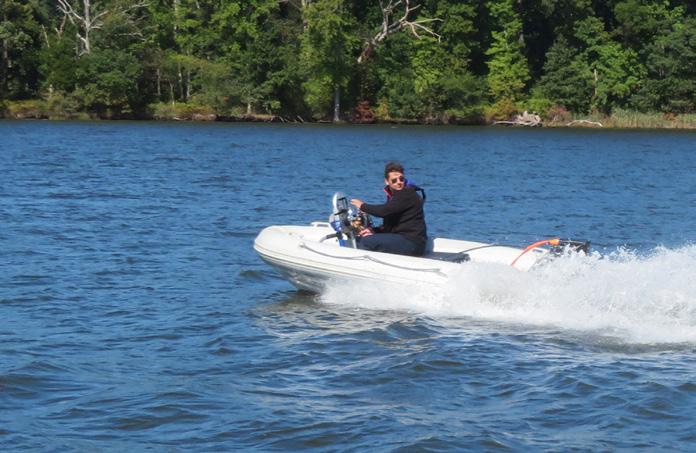
Chief executive, Ben Sorkin, utilizes a prototype outboard motor during a 24-mile electric boat race in Maryland in 2019. (Photo courtesy of Flux Marine)
Growing Startups at the Andlinger Center

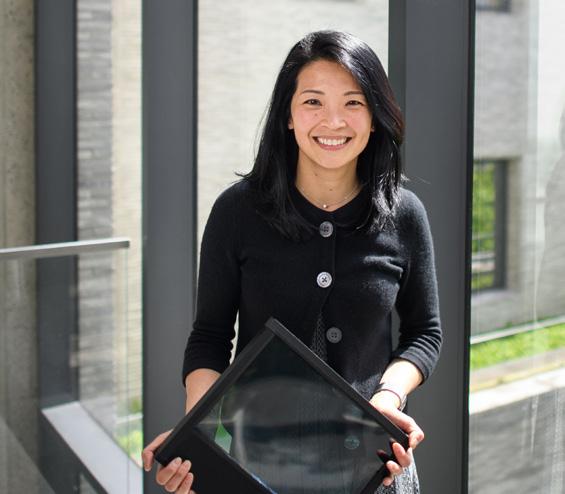
HiT Nano: Rethink Energy Storage
Yiguang Ju, the Robert Porter Patterson Professor of Mechanical and Aerospace Engineering and director of the Program in Sustainable Energy, founded the battery company to produce low-cost, high-performance batteries for electric vehicles based on a combustion process. In the past year, the company:
Q
Q
Q completed Phase I of the STTR grant from the U.S. Department of Energy for small business technology transfer and won a new Phase I STTR grant to develop energy storage materials. began working with Tadiran Batteries in Israel to develop a collaborative project, "Silicon Anode, Nickel Rich Cathode, High-Energy High-Safety AA Li-Ion Cell for the Industrial Internet of Things.” moved into the Rutgers EcoComplex Clean Energy Innovation Center in Bordentown, New Jersey.
Andluca Technologies: Smart Windows Untethered
The company grew out of the lab of Yueh-Lin (Lynn) Loo. Loo and cofounder and CEO, Nicholas Davy, developed the company to commercialize a solar UV technology used to power smart windows, which can control the amount of light and/or heat coming through them. The wireless technology enables an onboard power supply, allowing the smart windows to be used not only on new buildings, but also on existing ones, and create more efficient spaces while simultaneously allowing users to control their comfort. In the past year, the company:
Q
Q
Q completed a 10-window feasibility project with Princeton Facilities to evaluate the wireless, smartwindow design for existing buildings. completed, with Princeton scientists, an NSF STTR grant program that resulted in additional patent filings protecting novel materials development and device architectures. was selected for the RAPID Hardware Accelerator program, which has a 4% acceptance rate, and won the Northeast Regional of the CleanTech Open Accelerator, with both programs supporting Andluca’s first product development and integration into the sustainable building ecosystem.
Hearth Labs: Measuring the Missing Half of Thermal Comfort
The company is commercializing sensor-based technologies that can better measure occupant comfort and reduce energy consumption in buildings. Part of Hearth Labs’s technology was based on IP developed in the lab of Forrest Meggers. In the past year, the company:
Q
Q
Q licensed the SMART sensor technology from Princeton University. participated in HAX accelerator and program on design for manufacturing in Shenzen, China, and shifted the company base to Silicon Valley. patented a new product in the United States and is actively exploring market and investment opportunities.
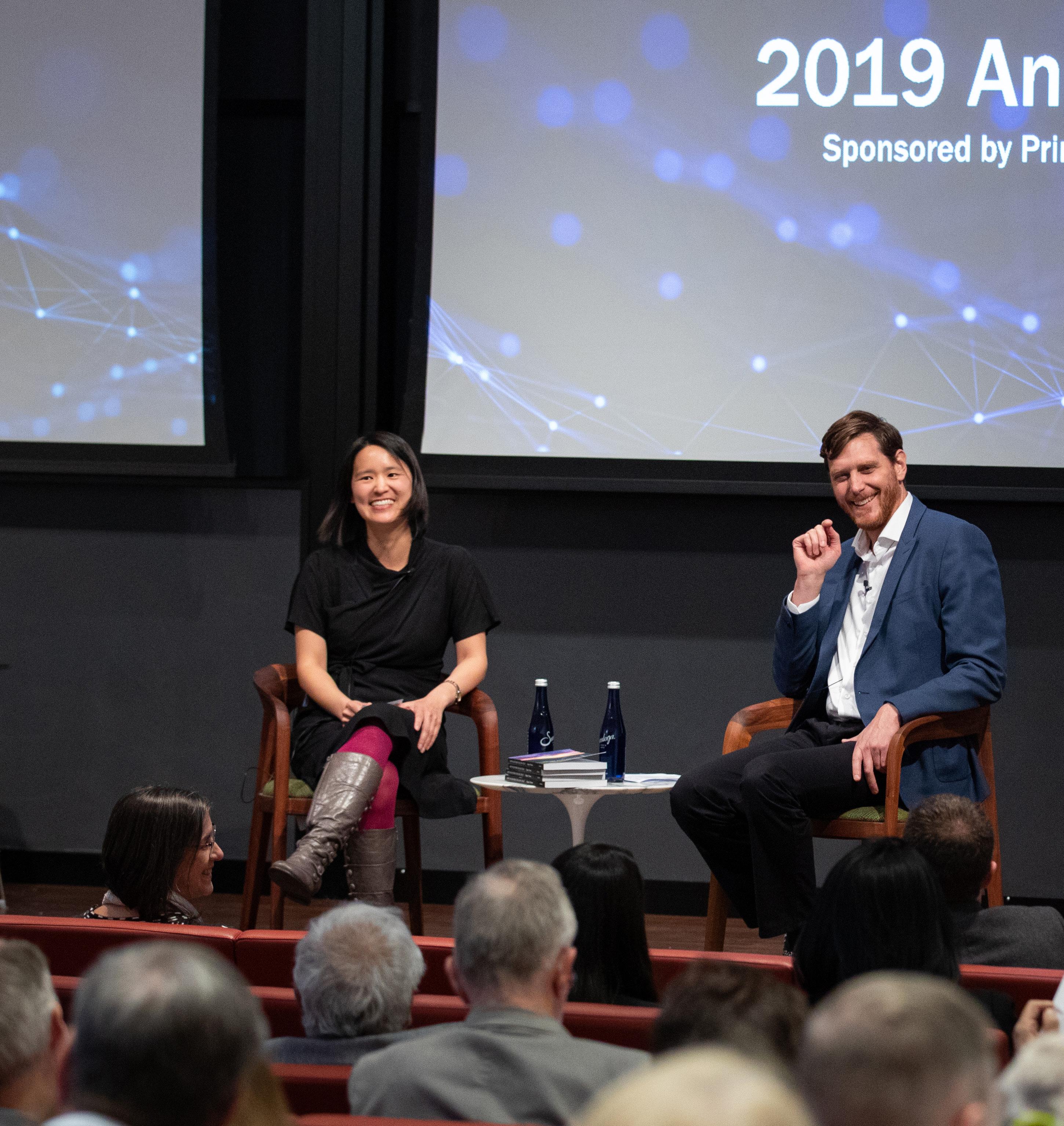
Audrey Lee, vice president of energy services at Sunrun, and Gregory Nemet, professor of public affairs at the University of Wisconsin-Madison, discuss the factors that led to a global cost decline in solar photovoltaics during the 2019 Annual Meeting. (Photo by Tori Repp /Fotobuddy)



